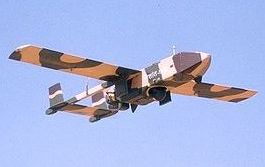Nishant indigenous Air Vehicle tested successfully
 Kolar, Apr. 6 : A World War II abandoned runway in Veerapura village near Kolar witnessed another historic event when the Nishant indigenous engine Unmanned Air Vehicle took its test flight from here.
Kolar, Apr. 6 : A World War II abandoned runway in Veerapura village near Kolar witnessed another historic event when the Nishant indigenous engine Unmanned Air Vehicle took its test flight from here.
The indigenous powering engine, a wankel Rotary type was original project of VRDE, Ahmednagar. It was later jointly designed and developed by NAL, a CSIR lab, VRDE, Ahmednagar and ADE, Bangalore.
The first flight took off on March 31 and climbed to an altitude of 1.8 Kilometers effortlessly before cruising for 35 minutes.
The air vehicle was recovered safely at the intended place in dried up Muduvadi.
The Wankel engine is first of its kind totally designed and developed in the country.
Very few countries in the world have the capability to develop and master this technology. The provisional flight clearance for the first indigenous prototype engine was given by the certifying agency, RCMA in a short ceremony held at the launch pad.
The engine weighs about 30 Kilograms, and is known for its high power to Weight ratio in single rotor category.
This indigenous engine is expected to replace the present imported engine of Nishant.
The engine has a power of 55 hp and can also be used for powering smaller air vehicles, automotive, Out Board Motors, and Industrial applications.
It was the first time when a UAV was flown with an indigenous engine.
NISHANT is a reconnaissance UAV which has completed its user trials with Indian Army and is in the verge of handing over few of these air vehicles to Indian Army very shortly. (ANI)